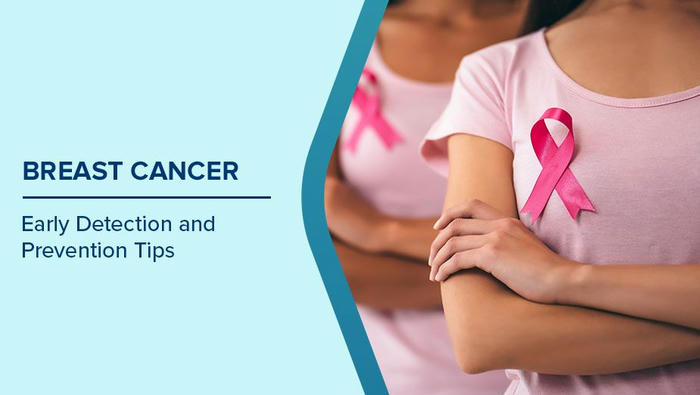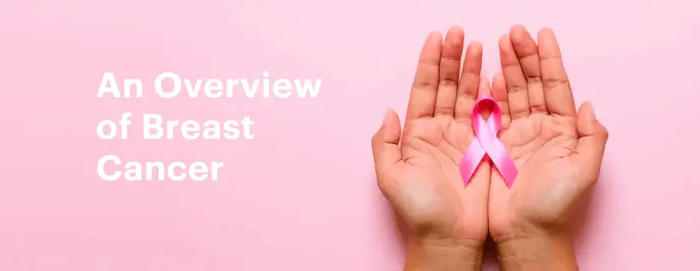Breast Cancer: Essential Facts Every Woman Should Know
Breast cancer is the most commonly diagnosed cancer in women worldwide, with 2.3 million new cases in 2020, according to the World Health Organization (WHO). Understanding its risks, early detection, and treatment options can significantly improve outcomes.

What is Breast Cancer?
Breast cancer occurs when abnormal cells in the breast grow uncontrollably. These cells can form tumors that invade surrounding tissues or spread to other parts of the body. The most common types include:
Ductal Carcinoma In Situ (DCIS) – Non-invasive, confined to milk ducts.
Invasive Ductal Carcinoma (IDC) – The most common, accounting for 80% of cases.
Invasive Lobular Carcinoma (ILC) – Starts in milk glands, spreading to nearby tissue.
Triple-Negative Breast Cancer (TNBC) – Lacks hormone receptors, making treatment challenging.
HER2-Positive Breast Cancer – Overproduces the HER2 protein, but responds well to targeted therapy.
Risk Factors
1. Age and Gender
Women over 50 face the highest risk.
Men can also develop breast cancer, though they account for 1% of cases.
2. Family History and Genetics
A first-degree relative (mother, sister, daughter) with breast cancer doubles the risk.
BRCA1 and BRCA2 gene mutations increase lifetime risk to up to 72%, according to the National Cancer Institute (NCI).
3. Hormonal Factors
Early menstruation (before 12) or late menopause (after 55) increases lifetime estrogen exposure.
Hormone replacement therapy (HRT) raises risk, per the American Cancer Society (ACS).
4. Lifestyle and Environmental Factors
Obesity increases risk, especially after menopause.
Alcohol consumption of three or more drinks per week raises risk by 15%.
Lack of exercise increases risk by 10-20%, according to the National Breast Cancer Foundation.
Recognizing Symptoms
Early symptoms include:
Lumps or thickening in the breast or underarm.
Changes in breast size, shape, or skin texture.
Nipple discharge or pain.
While 80% of breast lumps are benign, all should be evaluated by a healthcare provider.
The Importance of Early Detection
When diagnosed at stage 1 (localized), the 5-year survival rate is 99%, per the American Cancer Society.
Screening Methods
1.Mammograms – Recommended annually for women 40+ years.
2.Breast Self-Exams (BSEs) – Help detect changes early.
3.Clinical Breast Exams (CBEs) – Conducted by a healthcare provider.
Advances in Breast Cancer Treatment
Treatment depends on the cancer type, stage, and patient health.
1. Surgery
Lumpectomy (Breast-Conserving Surgery) – Removes only the tumor.
Mastectomy – Removes one or both breasts for larger tumors or high-risk cases.
2. Radiation Therapy
Reduces recurrence risk by up to 70% in early-stage cases.
3. Chemotherapy
Destroys fast-growing cancer cells, used before or after surgery.
4. Hormone Therapy
Blocks estrogen in hormone-receptor-positive cancers.
5. Targeted Therapy
Herceptin (trastuzumab) is highly effective for HER2-positive cancer.
6. Immunotherapy
Boosts the immune system to attack cancer cells, especially for TNBC.

Survival Rates and Hope for the Future
Localized breast cancer (stage 1): 99% survival rate.
Regional cases (spread to lymph nodes): 86% survival rate.
Research into gene-targeted therapies is improving outcomes, per the NCI.
Reducing Your Risk
Maintain a healthy weight – Excess fat increases estrogen.
Exercise regularly – Aim for 150 minutes per week.
Limit alcohol – Less than one drink per day is recommended.
Eat a balanced diet – Focus on fruits, vegetables, and whole grains.
Avoid smoking – Linked to higher cancer risk.
Prioritize regular screenings – Mammograms increase early detection rates.
Final Thoughts
Breast cancer affects millions, but early detection and medical advances continue to improve survival rates. Understanding risk factors, recognizing symptoms, and prioritizing screenings empower individuals to take control of their health. With ongoing research, personalized treatments, and better awareness, the future looks promising in the fight against breast cancer.
